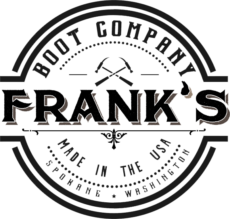
Working in inclement weather conditions or working in a trade that may leave your boots wet and soggy are sometimes impossible to avoid.
So you come home from work, or a hunting trip or playing in the snow and your boots are soaked through. What do you do? Your immediate thought may be to get them dry as fast as possible. However, this isn’t the most ideal or preferred method of drying your boots.
Let’s break it down…
Here’s How Leather Reacts:
When leather gets wet, the water molecules bond to the oils in it and draw them out as the water evaporates. As it absorbs moisture, it can cause the fibers to swell and stretch, which can make the leather become stiff and brittle, and can cause color to fade. Proper drying and treating your boots will help prevent any shrinking or stretching.
Leather is a natural and organic product made from animal skin. It is treated with oils and waxes to make it more durable and water-resistant. However, this does not mean that it is indestructible.
Different Types of Leather:
Oil tanned leather (like our Seidel work leather) is finished to be water and weather resistant, so it can handle everyday wear and exposure to water and sun/heat.
Vegetable tanned leather (such as our Wickett & Craig) while some claim this is a fairly water-resistant type of leather, it is porous and darkens easily as a result. Vegetable tanned leather will absorb any liquid quickly so limited exposure to water is always beneficial.
Chrome-tanned leather, re-tanned with Veg Tan (such as Horween CXL) will have a more significant water resistance. However, it is not advisable to subject leather to being saturated.
Best Process for Drying Your Boot:
First, you want to remove excess water. Take a dry cloth and dab off any moisture that has beaded or pooled on your boots. Once you’ve removed the moisture on top, you are going to allow your boots to air dry naturally as this is our preferred method. If time doesn’t permit, a Peet Boot Dryer is acceptable (Available on our website: Original Peet Dryer – Frank's Boots (franksboots.com).
Next, a leather preservative such as Obenauf's LP is recommended while the boot is slightly damp, so it will help penetrate the leather a little quicker. This will prevent your boot from losing any oil with the rest of the water evaporating. Be sure to wash your hands prior to applying LP as your hands have natural oils in them. This will help to prevent the transfer of oils and dirt from your skin to the leather. Massage it into the surface of your boot, with a soft rag and then allow the boot to finish drying naturally overnight. If any areas of the boot feel a little stiff, you can add a little more LP and spot treat in the morning. (Obenauf's products are available on our website, links are below)
Obenauf’s LP Boot Preservative – Frank's Boots (franksboots.com)
Obenauf's Leather Oil – Frank's Boots (franksboots.com)
Obenauf's Cleanit – Frank's Boots (franksboots.com)
Obenauf's Water Shield – Frank's Boots (franksboots.com)
Leather Care Combo Package – Frank's Boots (franksboots.com)
What NOT to do:
-
-Do not use heat.
-
-Do not use a blow dryer.
-
-Do not set your boots on or by a heat vent/radiator/stove
-
-Do not set your boots in direct sunlight.
Using heat can cause more damage to the leather than just the water. Letting the leather dry naturally is always best. Heat will also bring on that dry cracked leather you were trying to avoid in the first place.
What leather conditioner should I use?
We believe Obenauf’s is best as it is a natural product and Frank has trusted it for 28+ years. Obenauf’s LP, Leather Oil and Heavy Duty LP, are true natural preservatives. No harmful softeners nor sealers that damage leather.
The Beeswax/Propolis Suspension Formula in Obenauf's LP provides a time-release lubrication of natural oils over an extended period of time.
-
Propolis is an antibacterial tree resin, collected by honeybees to waterproof and disinfect their hives. It provides a natural barrier against harmful elements (salt & body acids).
-
The Beeswax/Propolis blend in Obenauf's LP leather preservative will resist water better and longer than other water-resistant products.
-
Obenauf’s LP continually receives the highest ratings in extensive field tests by outdoors-men and outfitters.
-
It’s highly recommended by Frank’s.
Do’s & Don'ts:
-
Do bring leather & Obenauf's product to room temperature before applying.
-
Never saturate leather with oil.
-
Never heat leather.
-
Avoid extreme heat which is damaging to your boots with glued-on soles.
-
Never use leather preservatives or oils around the hooks and eyes.
|
